Inverted
Polarity, what is it?
Copyright 2021 © Troels Gravesen
Due to corona, a lot of people have engaged in speaker building, also a few that maybe should not, but there is a first-time for all and one of the things that has come up as a surprise for newbies is polarity of drivers. What does that mean, and why do some crossovers require that e.g. the midrange must be connected with "inverted polarity", where the plus wire must go to speaker driver minus?
First of all, all speaker driver has a plus terminal and a minus terminal as seen on the terminals here, or on some speakers marked with a red dot.
When we apply a positive voltage to a speaker driver's
+ terminal, the cone will move
OUT.
This is the test as described here:
http://www.troelsgravesen.dk/polarity.htm
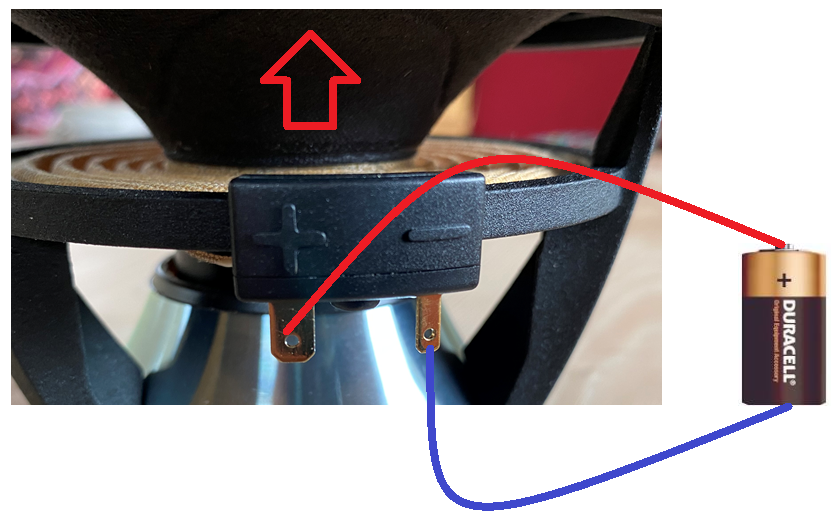
Now it is getting a bit complicated, as we have to look at the crossover and what it does to the signal passing, because what happens when we model an ideal crossover for a 2. order 2-way at 2000 Hz and connect both drivers with positive polarity? It goes like this:
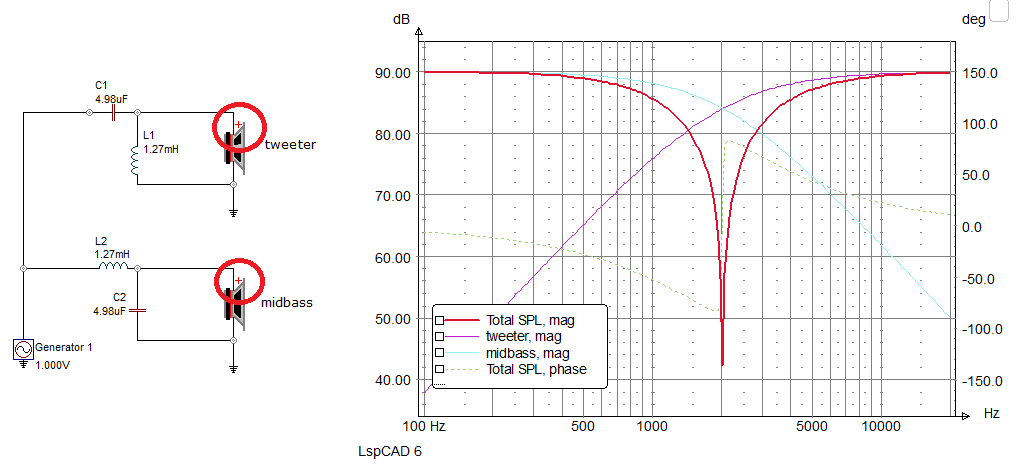
What we see is a deep suck-out at 2000 Hz, because a 2. order filter changes the phase of both drivers 90 degrees, but in opposite direction, thus they will cancel each other out at point of crossover and leave a deep suck-out = no sound at 2000 Hz.
If we change the polarity of the tweeter, it goes like this:
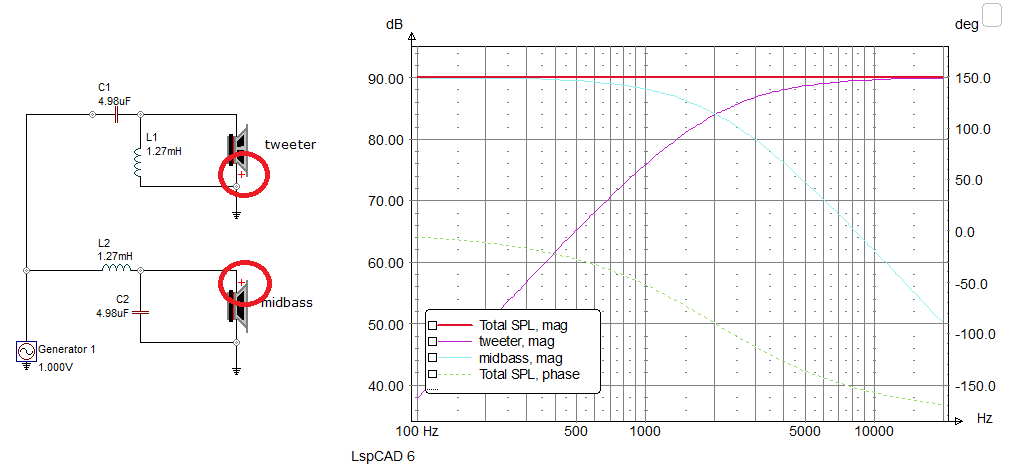
Now we have the flat response we want.
This is one example and applies to most of my construction using 2. order crossovers. If we have a 4th order crossover, more happens as we change the phase 180 degrees for each driver, meaning the two drivers will be 360 degrees out of phase and if we connect the drivers with opposite polarity we now have a deep suck-out at point of crossover.
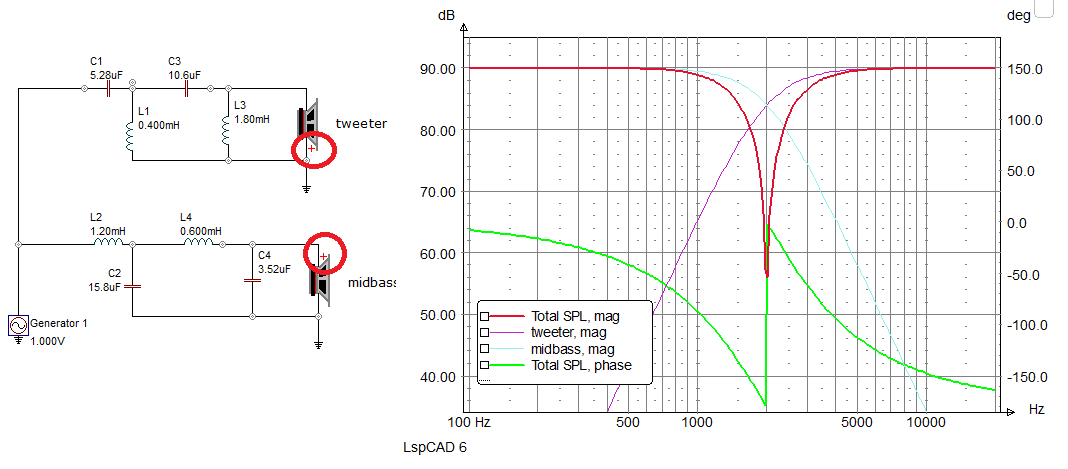
Connecting with same polarity we now have flat response, as should be.
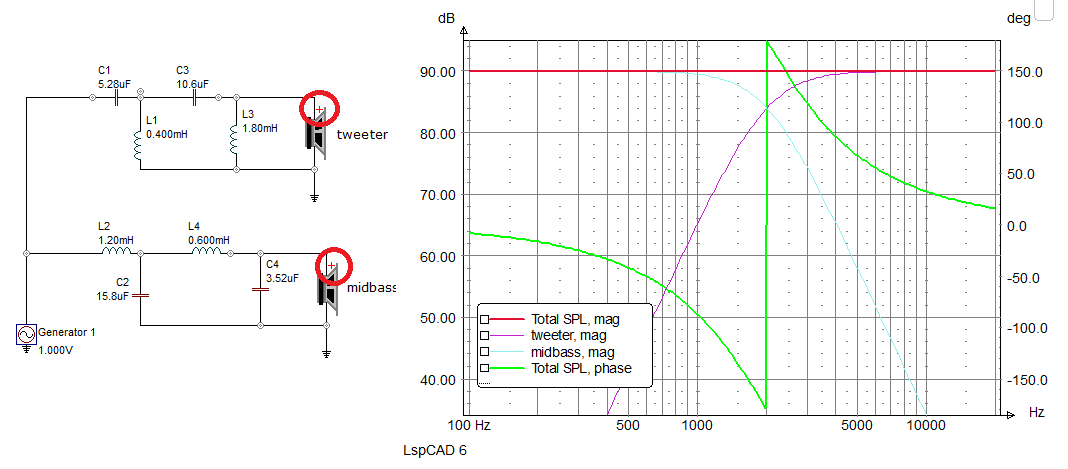
I won't here go into deep crossover theory, as this is beyond the scope
of this page. Just to illustrate, that crossovers change phase and
depending of which crossover we use, we may have to connect a driver
with inverted (opposite) polarity to get correct summation.
The above illustrations also assumes the speaker drivers being
acoustically aligned, thus many of my constructions have a stepped
baffle to align midrange and tweeter. More on the here: http://www.troelsgravesen.dk/Time-Alignment.htm
You don't have to understand all this, but I strongly urge you to check
wiring instructions carefully, e.g.:
Above an example where you connect the midrange with inverted (opposite)
polarity. Minus from the crossover board goes to driver PLUS.
Some people ignore this or think it cannot be true, but it is.
Useful links (Please
follow all links before e-mailing!):
http://www.troelsgravesen.dk/tips.htm
http://www.troelsgravesen.dk/tips.htm#CONSTRUCTION_OF_CROSSOVERS
http://www.troelsgravesen.dk/crossovers.htm
http://www.troelsgravesen.dk/LCR-RC.htm
http://www.troelsgravesen.dk/Inverted-Polarity.htm
http://www.troelsgravesen.dk/choices.htm